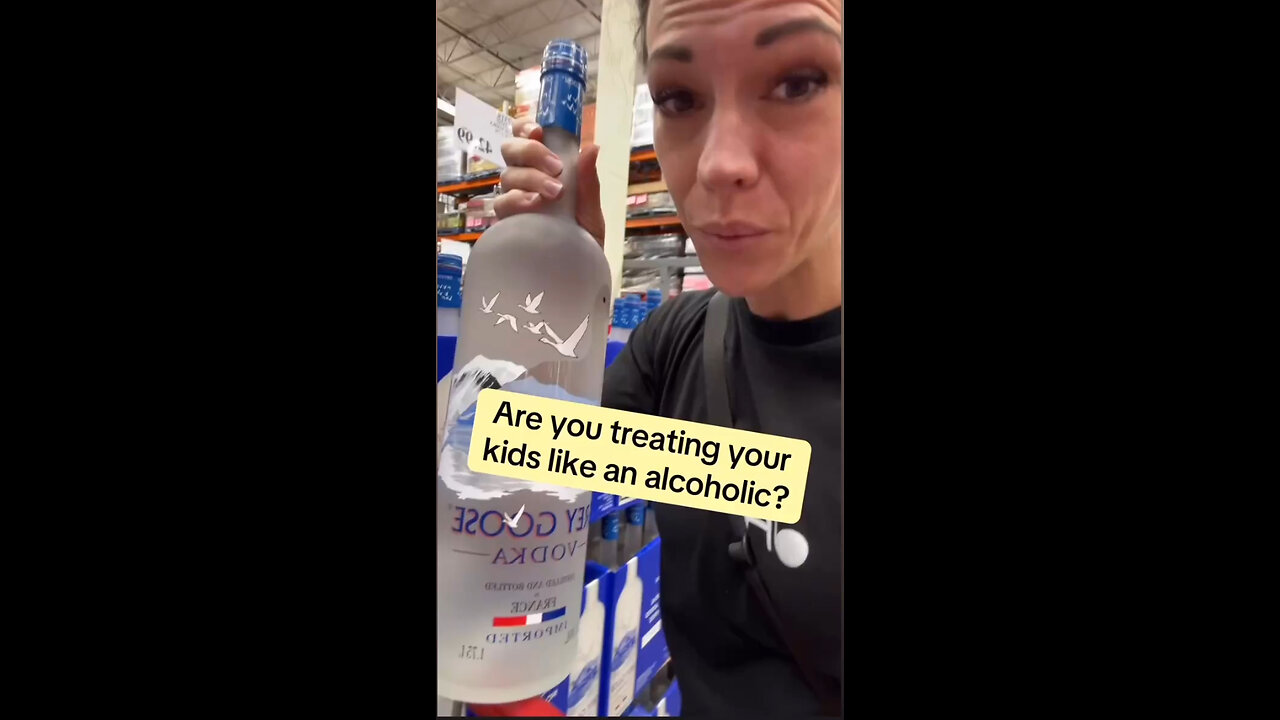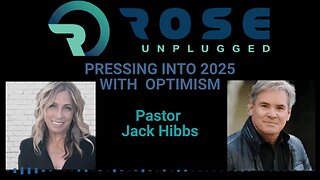Premium Only Content

The Silent Epidemic: Fructose and the Hidden Crisis in Children’s Health
In an era where childhood health problems are on the rise, a surprising culprit has emerged—fructose. This seemingly harmless sugar, found in fruit juices, sodas, and processed foods, is wreaking havoc on young bodies, particularly their livers. The parallel between fructose consumption and alcohol abuse is striking, yet it remains largely unaddressed in mainstream discussions about health. This article delves deep into the dangers of fructose, the science behind its impact, and how we can safeguard our children’s health in a world saturated with hidden sugars.
1. Fructose: The Sweet Villain in Disguise
Fructose is a naturally occurring sugar found in fruits, but in modern diets, it takes on a far more dangerous form. High fructose corn syrup (HFCS) and concentrated fruit juices are ubiquitous in processed foods and beverages, targeting children with colorful packaging and clever marketing. While fructose from whole fruits is accompanied by fiber, vitamins, and minerals, its isolated form in juices and syrups creates a toxic overload for the liver.
The Biochemical Problem
• Unlike glucose, which can be metabolized by nearly every cell in the body, fructose is processed exclusively by the liver.
• When consumed in excess, fructose overwhelms the liver, converting into fat. This leads to non-alcoholic fatty liver disease (NAFLD)—a condition once primarily associated with chronic alcoholics but now increasingly seen in children.
Sources of Fructose in Children’s Diets
• Fruit juices marketed as “healthy” alternatives to soda.
• Sugary snacks and breakfast cereals.
• High fructose corn syrup in processed foods, condiments, and baked goods.
2. The Rise of Liver Disease in Children
Non-alcoholic fatty liver disease (NAFLD) is now the most common chronic liver condition in children, affecting millions worldwide. Alarmingly, it often develops silently, showing no symptoms until significant damage has occurred.
How Fructose Damages the Liver
1. Fat Accumulation: Fructose is rapidly converted into fat, which accumulates in the liver cells, impairing their function.
2. Inflammation: Over time, the excess fat triggers chronic inflammation, leading to fibrosis (scarring of the liver tissue).
3. Insulin Resistance: Fructose consumption contributes to insulin resistance, exacerbating conditions like type 2 diabetes and metabolic syndrome.
4. Oxidative Stress: The metabolic breakdown of fructose generates harmful byproducts that damage liver cells.
The Shocking Statistics
• Pediatric NAFLD: Studies estimate that up to 10% of children and 38% of obese children now have NAFLD.
• Early Onset: Cases of NAFLD are being diagnosed in children as young as two years old, highlighting the urgency of this crisis.
3. Fructose vs. Alcohol: A Disturbing Parallel
Dr. Ben Bikman’s insight on fructose’s impact is profound: “Fructose acts on the liver just like alcohol.” The comparison isn’t just metaphorical—it’s backed by science.
Similarities Between Fructose and Alcohol
• Metabolic Pathway: Both substances are metabolized in the liver, leading to fat accumulation and liver damage.
• Toxic Byproducts: Both generate harmful metabolites that cause oxidative stress and inflammation.
• Addictive Properties: Like alcohol, fructose triggers the brain’s reward centers, leading to cravings and overconsumption.
The result? A generation of children with health problems once reserved for adults, including liver failure, obesity, and diabetes.
4. Juice Is Not the Solution
Juice is often seen as a healthy alternative to soda, but it is far from harmless. A glass of fruit juice can contain as much sugar as a soda—and just as much fructose.
Why Whole Fruits Are Different
• Fiber: Whole fruits contain fiber, which slows sugar absorption and reduces the burden on the liver.
• Satiety: Fiber and water content make whole fruits more filling, reducing the likelihood of overconsumption.
• Nutritional Value: Whole fruits provide essential vitamins, minerals, and antioxidants that are often stripped away in juice processing.
The Juice Trap
Parents are often misled by labels like “100% natural” or “no added sugar.” The reality is that even natural fruit juices are concentrated sources of fructose, lacking the fiber that makes whole fruits beneficial.
5. Practical Advice to Protect Your Kids
1. Eliminate Sugary Drinks
• Replace sodas and fruit juices with water, herbal teas, or infused water for natural flavor.
• Educate your children on why these swaps are important, empowering them to make healthier choices.
2. Focus on Whole Foods
• Prioritize whole fruits over fruit juices. For example, an orange is far better than a glass of orange juice.
• Limit processed foods high in hidden sugars, such as granola bars, yogurts, and cereals.
3. Read Labels Carefully
• Look for hidden sources of fructose, including HFCS, agave syrup, and “natural sweeteners.”
• Aim for foods with fewer than 5 grams of added sugar per serving.
4. Create a Balanced Diet
• Incorporate liver-friendly foods like leafy greens, avocados, and omega-3-rich fish.
• Ensure adequate protein intake, which supports overall metabolic health.
5. Lead by Example
• Children model their behavior on their parents. By making healthier choices yourself, you set a powerful example for your kids.
6. The Bigger Picture: A Call for Change
The fructose crisis isn’t just a personal health issue—it’s a societal problem driven by marketing, misinformation, and lax regulations. Addressing this issue requires collective action:
• Education: Schools and healthcare providers must prioritize education on the dangers of added sugars.
• Policy Change: Governments should regulate the use of fructose in processed foods and improve food labeling standards.
• Corporate Accountability: Food manufacturers must be held accountable for deceptive marketing practices that target children.
7. Conclusion: Protecting the Next Generation
The evidence is clear: fructose, particularly in its processed forms, poses a serious threat to children’s health. By overloading their livers, we risk exposing them to lifelong health complications that are entirely preventable.
But it’s not too late. By making informed choices and advocating for systemic change, we can protect our children and ensure they grow up with healthy bodies and minds. The solution starts at home, with every decision we make about what goes on the plate and in the glass.
As parents, caregivers, and advocates, we have the power to rewrite the narrative and give our children the gift of health. Let’s use it.
-
 2:45
2:45
FragmentsOfTruth
1 day agoThe Hidden Architects: Unveiling Humanity’s Forgotten Origin
108 -
 10:22
10:22
Dr Disrespect
3 days agoDR DISRESPECT - 2024 RECAP
50.7K78 -
 18:03
18:03
Neil McCoy-Ward
6 hours agoThe US 'INCIDENTS' Are just The Tip Of The Iceberg...
12.1K3 -
 1:33:19
1:33:19
Tactical Advisor
6 hours agoThe Vault Room Podcast 007 | Terrorist Attacks Update
46.3K3 -
 18:08
18:08
ROSE UNPLUGGED
23 hours agoAn Air of Optimism for 2025: Can You Feel It?
8.95K2 -
 1:57:06
1:57:06
The Charlie Kirk Show
3 hours agoThe 2025 Speaker Election + DEI FBI + Britain's Grooming Gangs | Gaetz, Gilliam, Marshall | 1.3.2025
99.2K72 -
 42:43
42:43
Grant Stinchfield
5 hours ago $3.74 earnedThe Left's Will Evil Plot to Prevent Trump from Taking Office Exposed!
19.5K14 -
 52:32
52:32
The Dan Bongino Show
5 hours agoProducer's Picks: Bongino's Best Segments - 01/03/25
135K463 -
 56:49
56:49
VSiNLive
4 hours agoA Numbers Game with Gill Alexander | Hour 1
36K3 -
 1:42:46
1:42:46
Film Threat
18 hours ago2025 MOVIES TO LOOK FORWARD TO + JANUARY'S BEST FILMS | Film Threat Livecast
28K4